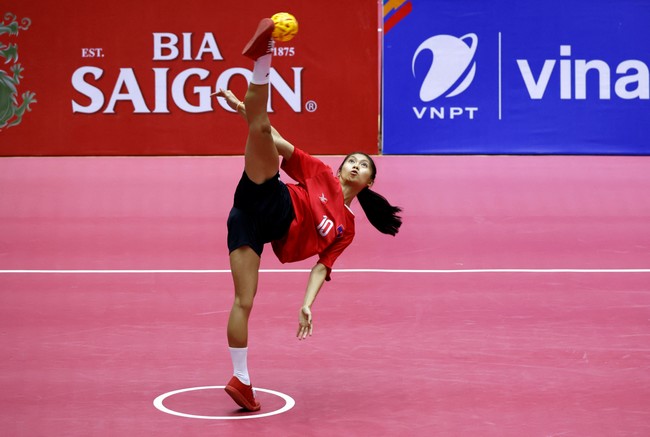Volleyball Variations and Related Games
Invented by William G. Morgan in 1895, volleyball has grown to become one of the most popular sports on the planet. With over 200 countries embracing this dynamic game, volleyball has evolved into various forms, each with its own unique rules and characteristics. In this article, we will delve into the world of volleyball, exploring its origin, nature, and the diverse variations it has given birth to.
The Birth of Volleyball
Volleyball’s origins can be traced back to the United States in the late 19th century. William G. Morgan, an athletic director at a YMCA, was tasked with creating a game suitable for older clientele. In 1895, he introduced a sport originally called Mintonette, which would later be known as volleyball. Morgan’s vision was to create an indoor team game that required minimal equipment, promoted equal participation, and combined elements from tennis, handball, and basketball.
See also: The Reasons Behind the Iconic Volleyball Skirt
Nature of Volleyball
At its core, volleyball is a team sport with a straightforward set of rules. Here are the key aspects that define the nature of volleyball:
The Objective: The primary goal is to propel the ball over the net and into the opposing team’s court.
Scoring: Points are awarded when the ball touches the opponent’s court floor or when the opposing team cannot successfully return the ball.
Three Hits: Each team has three touches (hits) to send the ball over the net.
No Consecutive Touches: A player cannot hit or touch the ball more than once in succession.
Winning Margin: A team must win by at least two points.
Ball Play: The ball may be played off the net and with any part of the body.
No Catching: Catching, holding, or throwing the ball is not allowed.
Serve Requirements: The ball must go over the net during the serve and is served from behind the backline.
Player Rotation: Players rotate positions to ensure everyone has the opportunity to serve and play different roles.
Net and Centerline Rules: Players cannot cross the net or touch the net during play.
See also: What is the hardest position in girls volleyball?
Types of Volleyball
Volleyball has adapted to various settings, leading to the emergence of different forms of the game. Here are some of the most prominent types:
Indoor Volleyball:

Played on wood or rubberized courts, indoor volleyball features teams of six players. Games, also known as sets, are played to 25 points, with tiebreakers going to 15.
Beach Volleyball:

Set on sandy shores, beach volleyball is typically played by two players per team, although three or four players are also common. Sets are played to 21 points, with a best-of-three sets format.
International Volleyball:

Played worldwide, this version encompasses both amateur and professional players competing at the highest level. Many professional players start in club teams and progress through high school, college, and eventually national teams, with the FIVB governing international volleyball.
Wallyball:

A variation of traditional volleyball, wallyball is played in enclosed handball courts. The ball can bounce off the walls, adding a unique dimension to the game.
Bossaball:

A relatively new version, Bossaball was developed in Colombia. It combines volleyball, soccer, gymnastics, and music. The court features trampolines in the middle and inflatable surfaces, creating a high-flying and entertaining experience.
Jokgu:
Originating in South Korea, Jokgu is akin to soccer, with players using their feet to kick the ball over a low net. The ball can bounce once between kicks, and headers are allowed.
Volleyball Variations and Related Games
Volleyball’s popularity has spawned numerous variations and related games. Some of these include:
Crossnet: A unique four-way volleyball game that combines elements of volleyball and foursquare.

9-man: A variant with historic and cultural significance, popular among Chinese immigrants in the United States. It’s still played in Asian countries and North America.
See also: Why Volleyball Girls Have Thick Legs
Snow Volleyball: Played on snow, this variant has gained recognition from the Fédération Internationale de Volleyball and may one day be part of the Winter Olympic Games.

Sepak Takraw: Common in Southeast Asia, this sport utilizes a rattan ball, and only players’ feet, knees, chests, and heads can touch the ball.

Footvolley: A Brazilian sport similar to beach volleyball but without the use of hands and arms.

Hooverball: A unique game with a medicine ball, combining elements of volleyball and tennis.

Towel Volleyball: A fun outdoor version where players use towels to throw the ball into the opponent’s field.
Volley Squash: Played within squash courts, this variation adapts volleyball to an enclosed space.
Newcomb Ball: A historic game where the ball is caught and thrown instead of hit, rivalling volleyball’s popularity in the early 20th century.
Biribol: An aquatic variant played in shallow swimming pools, originating from Brazil.

Ecua-volley: An Ecuadorian variant with variations in player numbers and ball weight.
See also: The Secrets Behind Volleyball Girls’ Fit and Fabulous Bodies
Handball: A sport where teams use hands to throw a ball into a goal.

Prisoner Ball: A variation of Newcomb ball, often played by children, with players being “taken prisoner” instead of scoring points.
See also: Why are volleyball girls so tall?
Conclusion
Volleyball, born from the creative mind of William G. Morgan, has evolved into a global sensation with diverse forms and variations. From indoor and beach volleyball to Bossaball and Sepak Takraw, this sport has something for everyone. Whether you’re a professional athlete or just looking for a fun game at the beach, volleyball offers a unique blend of athleticism, teamwork, and excitement that transcends borders and cultures.





